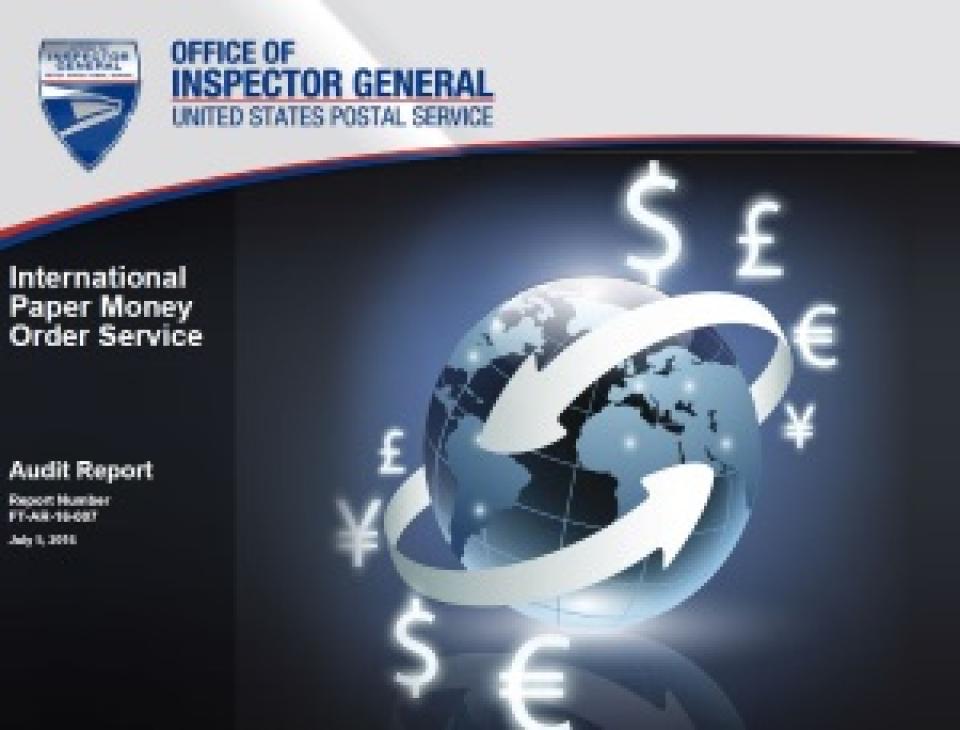International Paper Money Order Service
Background
The U.S. Postal Service has agreements with 27 foreign countries to accept and cash their money orders in the U.S. In return, those countries accept Postal Service money orders issued to recipients in their countries. This international paper money order (IPMO) service provides customers a means to send funds abroad.
IPMO sales have declined drastically, from $60 million in fiscal year (FY) 2010 to $34 million in FY 2015. In FY 2015, the program generated only $500,000 in revenue from money order fees.
Worldwide, the international money transfer market grew between 3 percent and 11 percent annually from 2010 to 2014. The U.S. is the number one sender of international money transfers capturing 22 percent of the market. U.S. residents sent $110 billion in money transfers to other countries in 2010 and $130 billion in 2014. In FY 2014, the Postal Service sold just $38 million worth of IPMOs, which represented only 0.03 percent of the U.S. outbound international money transfer market.
The Postal Service’s domestic money orders program faces challenges similar to those of the IPMO program. In the wake of alternatives from other providers and broad shifts toward electronic forms of payment, domestic money order sales plunged 60 percent from their peak of 233 million in FY 2000 to 93 million in FY 2015.
Our objective was to evaluate the Postal Service’s IPMO program and identify opportunities for improvements and revenue growth.
What the OIG Found
The Postal Service’s IPMO program is not well-suited for today’s fast-paced environment as new technologies enable customers to send and receive money faster through electronic channels. These faster and more convenient alternatives contributed to a steep decline in paper money order sales in recent years. If the decline continues, we project revenue will be about $151,000 in FY 2020, a relatively insignificant amount for Postal Service operations.
Demand for electronic international money transfer services is strong worldwide. While the Postal Service currently provides electronic international money transfer service from the U.S. to 10 Latin American countries, its volume has steeply declined in recent years. In FY 2014, the program transferred $13 million, which was only 0.01 percent of the U.S. outbound remittance market, and it generated less than $460,000 in revenue. If the declining trend continues, we estimate the program will not generate any revenue by FY 2019. Our analysis shows that if the Postal Service could increase its market share from 0.25 percent in the first year to 3 percent in year 5 by improving and expanding its service, it could generate an average revenue of $89.2 million annually over the 5-year period.
The Postal Service has also experienced large declines in domestic money orders sales. However, we estimate that by adding digital technologies along with active strategic management and marketing, the Postal Service would gain an average of $30.2 million in additional profit annually over the 5-year period.
What the OIG Recommended
We recommended management remake the international paper money order program into an enhanced electronic international money transfer services program and improve the domestic money order program by adding digital technologies along with strategic management and marketing. In addition, we recommended management assign a project manager to oversee revenue growth opportunities for money transfer services and products.

